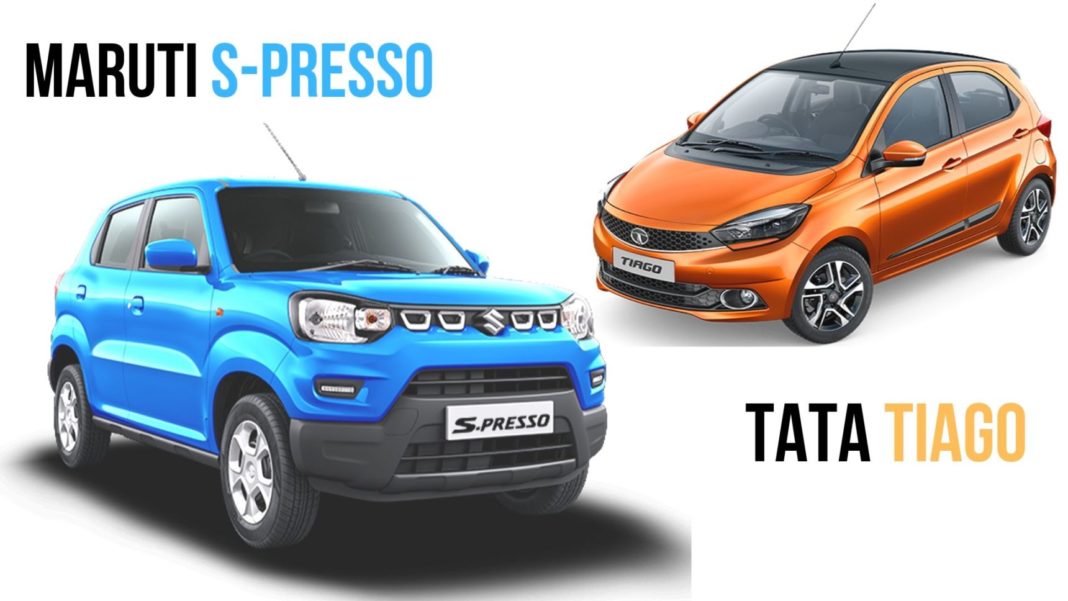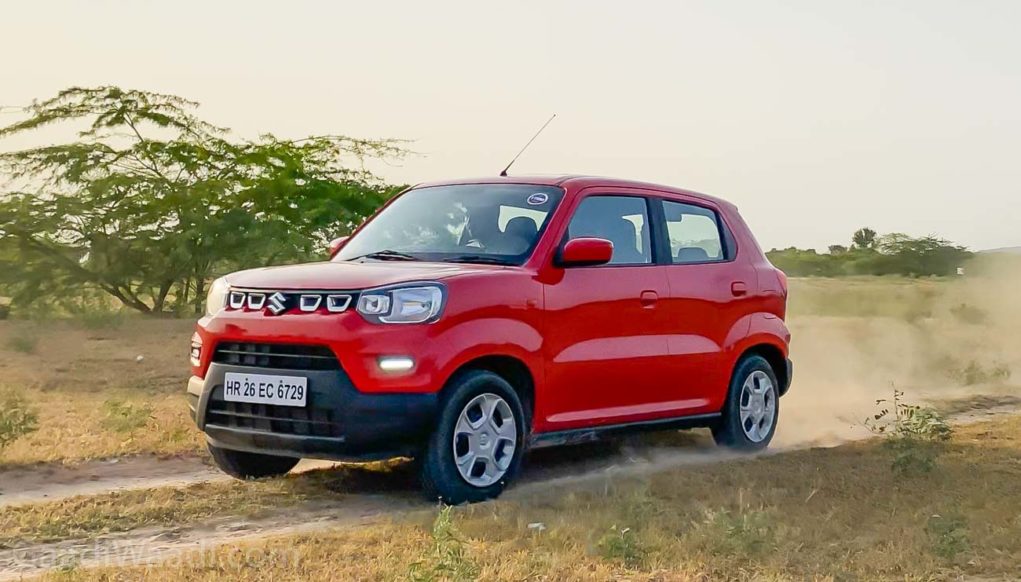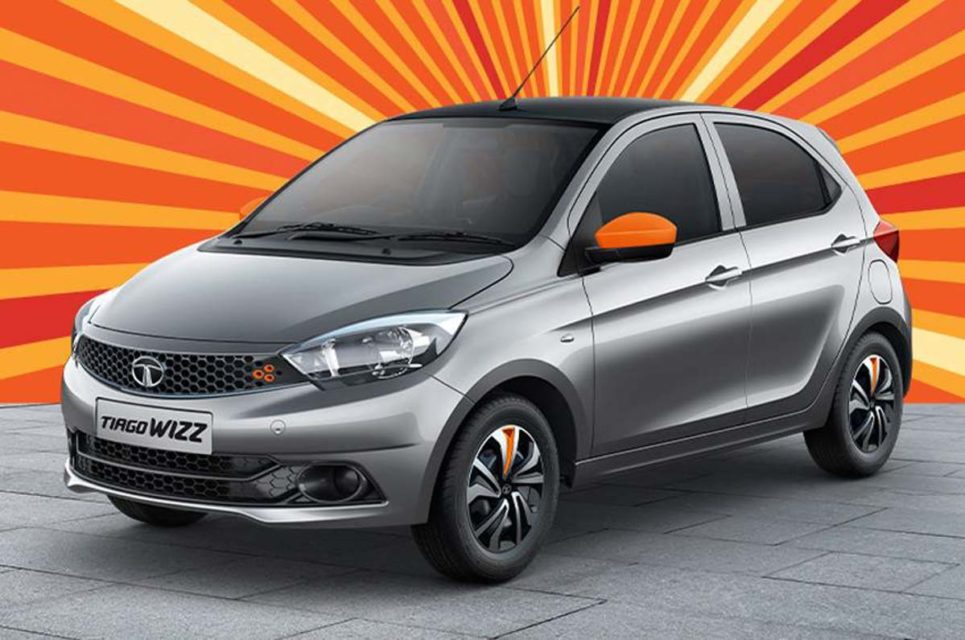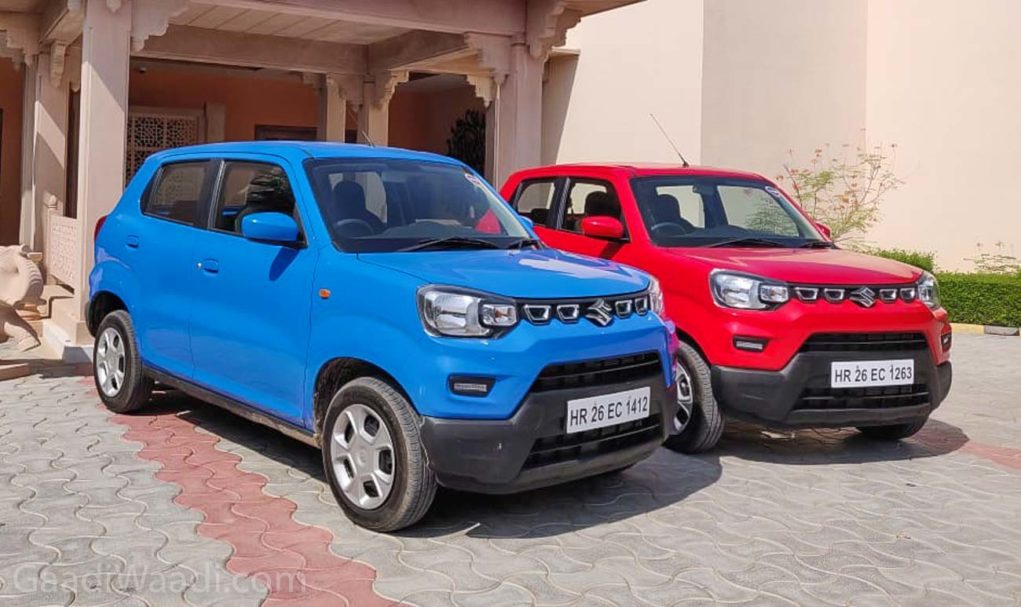
Some variants of the newly launched Maruti Suzuki S-Presso undercut the Tata Tiago, here’s a comparison showing price differences, specs and dimension of both the cars
Maruti Suzuki launched the “Micro SUV”, S-Presso recently, with which Maruti Suzuki aims to build a new segment altogether. With the dimensions of a small hatchback and the stance of an SUV, the S-Presso will be stacked above the Alto in the Maruti Suzuki’s Indian line up.
Whereas, the compact hatchback Tata Tiago has been on sale in India since 2016 and is looking to receive a mid-life update next year. At this price point, buyers are looking for a car which does not lack space and can pack an Indian family comfortably.
Let’s take a look at the dimensions of the two:
| Dimensions | Maruti Suzuki S-Presso | Tata Tiago |
| Length | 3,565 mm | 3,746 mm |
| Width | 1,520 mm | 1,647 mm |
| Height | 1,564 mm | 1,535 mm |
| Wheelbase | 2,380 mm | 2400 mm |
| Ground Clearance | 180 mm | 170 mm |
As per the dimensions of the two cars are concerned, the Tata Tiago is certainly the bigger car. The S-Presso is 181 mm shorter and 127 mm narrower than the Tiago. The wheelbase is also shorter than Tiago by a mere 20 mm.
But, the S-Presso is 29 mm taller than the Tiago and has a better ground clearance of 180 mm, compared to Tiago’s 170, which are the only two aspects where the former beats the latter in terms of dimensions.
| Specification | Maruti Suzuki S-Presso | Tata Tiago |
| Engine | BS6-compliant 1.0-litre 3-cylinder Petrol | BS4-compliant 1.2-litre 3-cylinder Petrol |
| Power | 68 PS @ 4000rpm | 85 PS @ 6000rpm |
| Torque | 90 Nm @ 3500rpm | 114 Nm @ 3500rpm |
| Transmission | 5-speed manual/5-speed auto | 5-speed manual/5-speed auto |
The S-Presso is only available with a petrol drivetrain, hence it is only fair to compare it with Tiago’s petrol engine.
Tiago’s engine is clearly bigger and more powerful than the one present on S-Presso. S-Presso’s 1.0-litre petrol engine makes 68 PS of peak power and 90 Nm peak torque. The Tiago’s bigger 1.2-litre unit is rated at 85 PS/114 Nm. Both the cars come with a 5-speed manual transmission and an optional 5-speed automatic transmission.
It should be noted that the S-Presso gets a BS6-compliant engine, but Tata is yet to update the Tiago’s BS4-compliant engine to meet the BS6 norms. It is likely that a BS6-compliant engine will be made available on the Tiago facelift, set to launch early next year.
Both the cars get similar safety features which include driver-side airbag, ABS with EBD, high-speed warning alert system, front seat belt reminder and reverse parking sensors as standard.
The S-Presso being a newer car gives the Tiago a run for its money in terms of features on offer even after being a more affordable offering. It gets a 7-inch SmartPlay Studio touchscreen infotainment system with Apple CarPlay and Android Auto connectivity, multi-function steering wheel with mounted audio controls, keyless entry, a round-shaped digital speedometer etc.
The Tiago recently got updated with a 7.0-inch infotainment system earlier this year, and a digital instrument cluster last week itself.
Let’s see how do these cars compare variant-wise. All prices listed are ex-showroom.
The Maruti Suzuki S-Presso has a starting price of Rs 3.69 lakh (ex-showroom) and goes up to Rs 4.91 lakh for the top-end VXi+ automatic variant. The Tiago, on the other hand, starts at Rs 4.39 lakh for the base XE variant. The top automatic variant with dual-tone colour scheme costs Rs 6.36 lakh (ex-showroom), which is way over the S-Presso.
The top manual variant of the S-Presso is priced somewhere around the base variant of the Tiago, whereas the Tiago’s XZ automatic is Rs 77,000 more expensive than the S-Presso’s top automatic variant.
Maruti Suzuki S-Presso vs Tata Tiago – Verdict
By being the more affordable product, the S-Presso is a more lucrative offering against Tata Tiago. While Tiago has strong build quality and it has already established itself in the market, the main USP for S-Presso will be its good looks as the SUV-like stance is all the rage in recent times and coupled with an economical petrol engine, Maruti Suzuki has a winner on hands.



